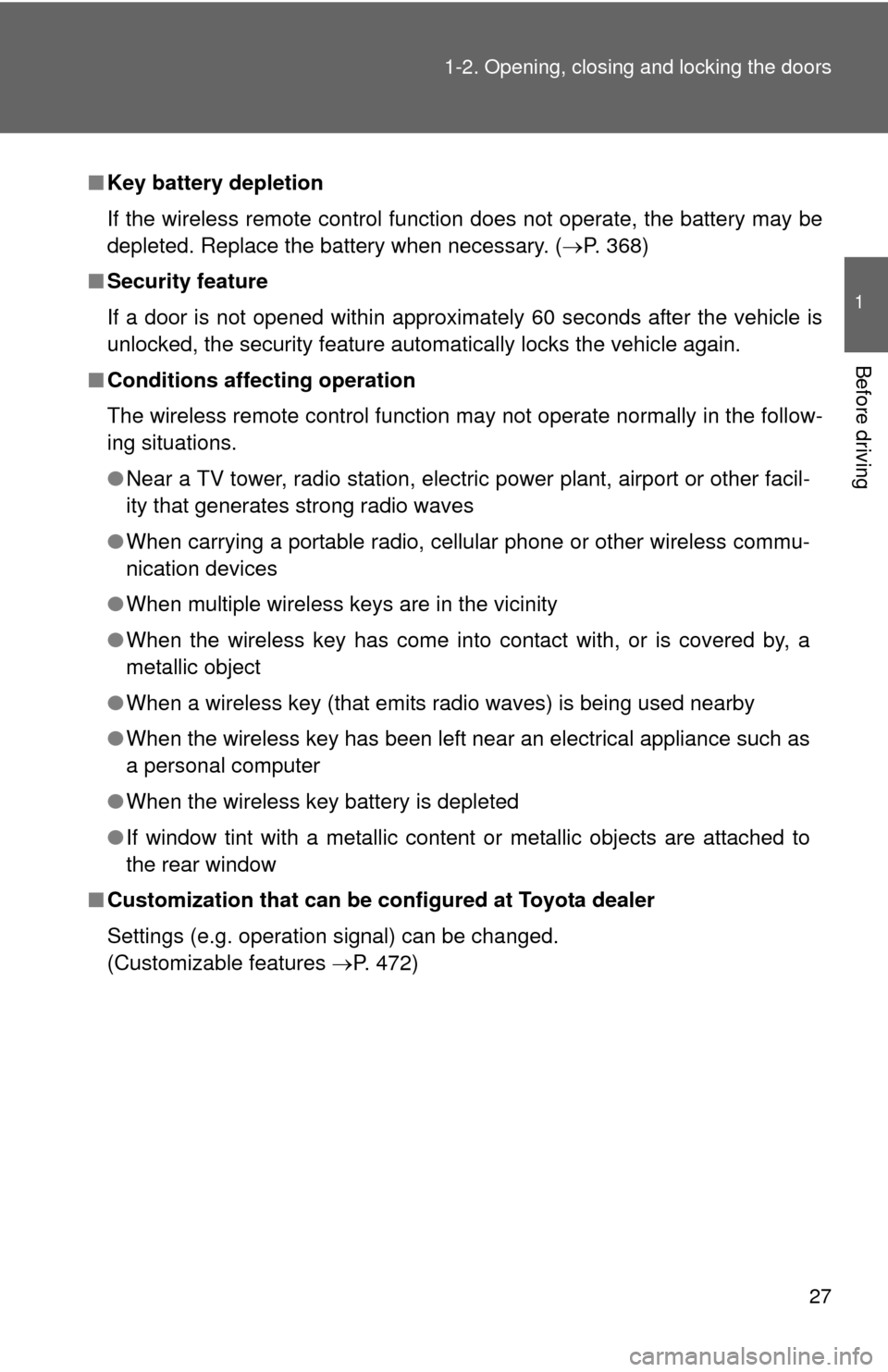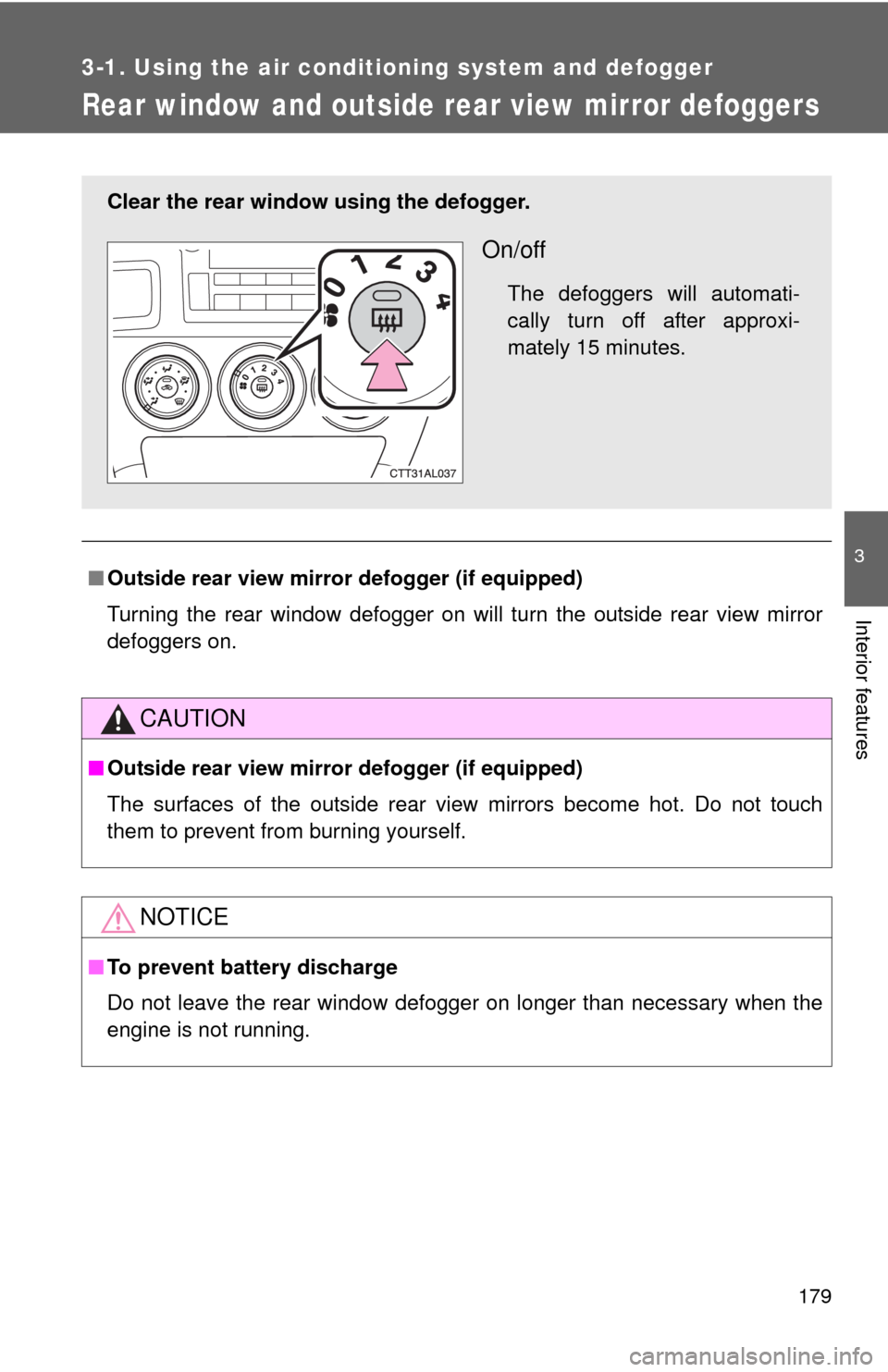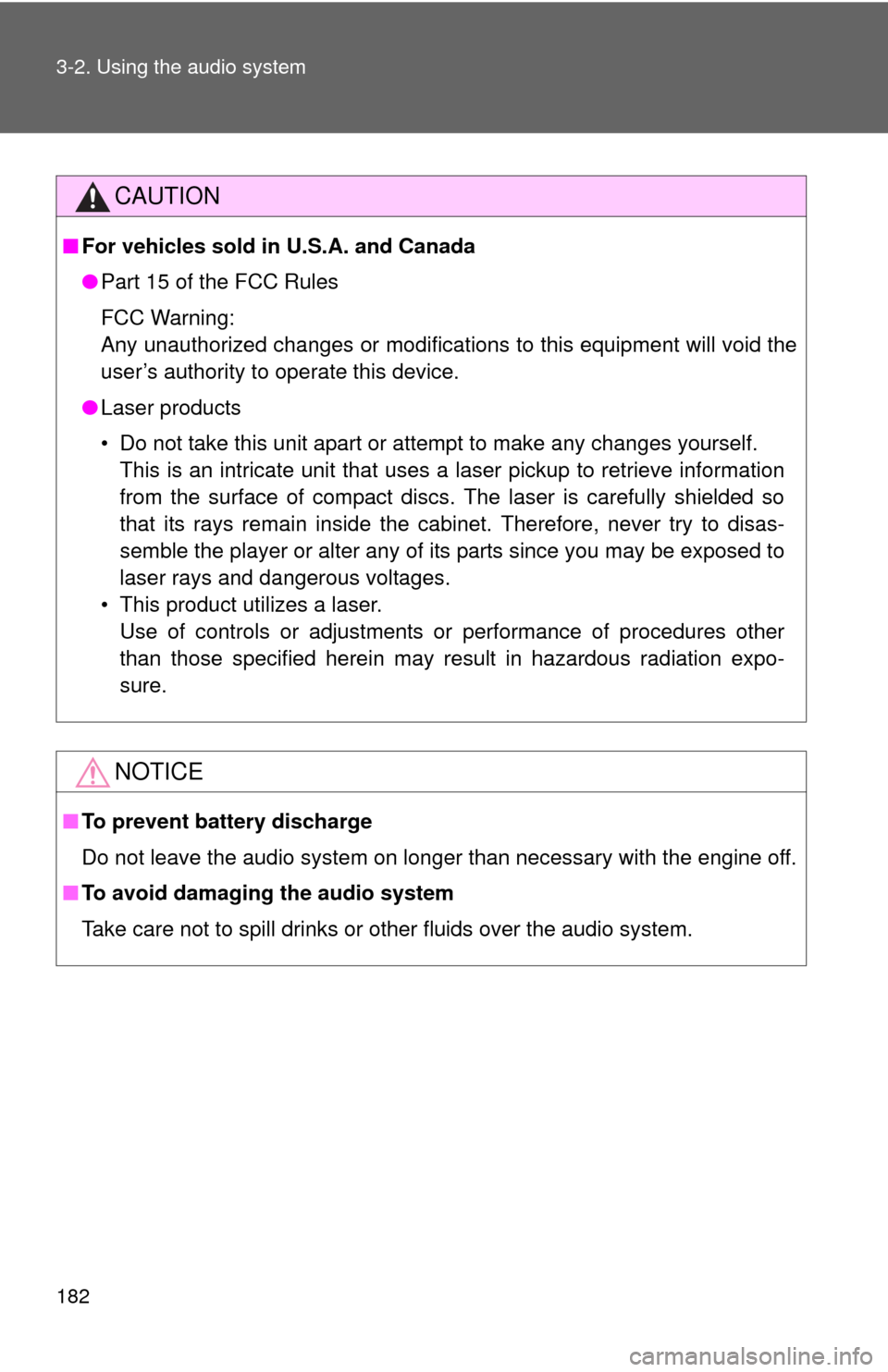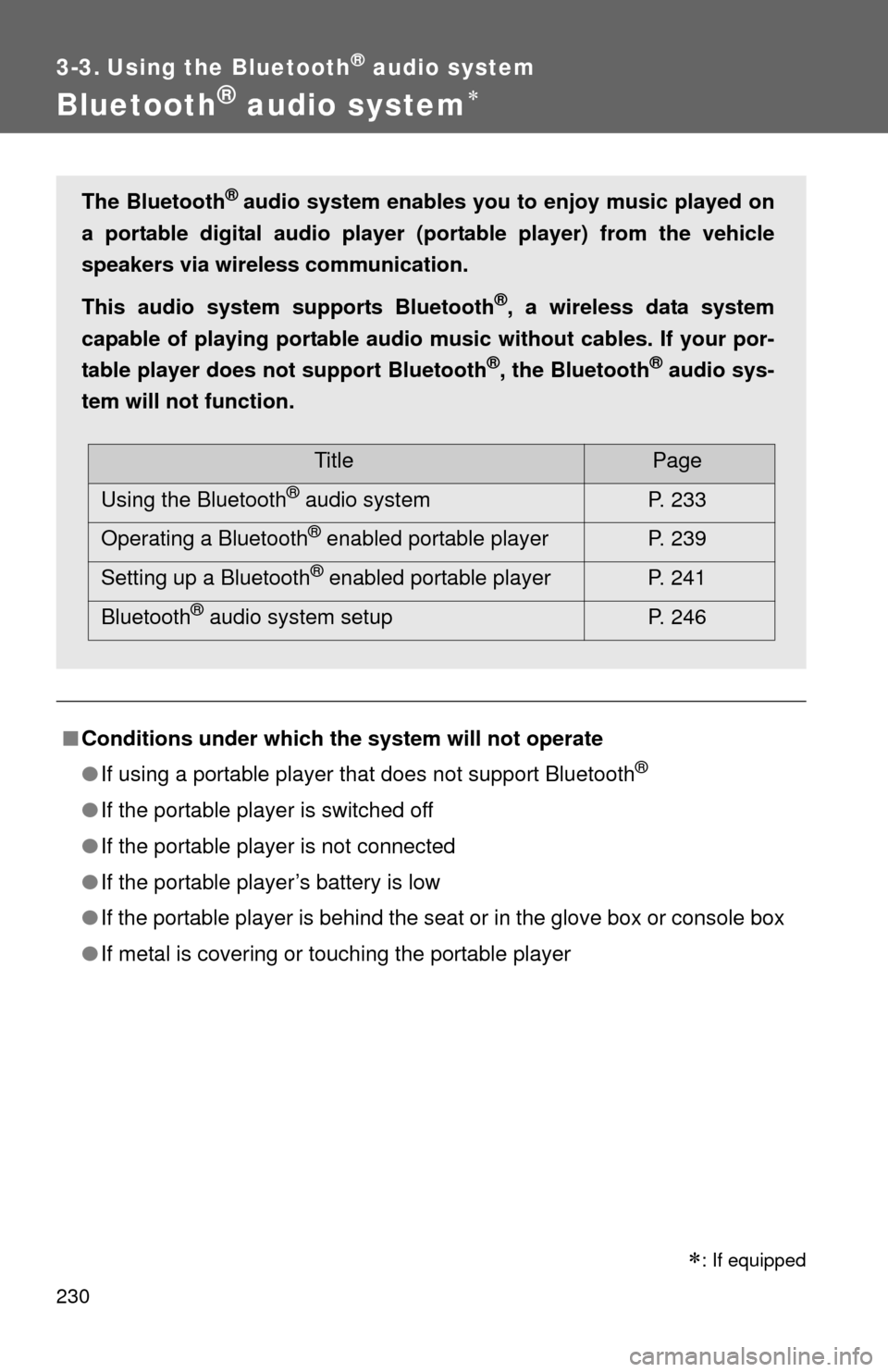battery TOYOTA MATRIX 2011 E140 / 2.G Owners Manual
[x] Cancel search | Manufacturer: TOYOTA, Model Year: 2011, Model line: MATRIX, Model: TOYOTA MATRIX 2011 E140 / 2.GPages: 501, PDF Size: 11.47 MB
Page 4 of 501

TABLE OF CONTENTSIndex
4
3-5. Using the interior lights
Interior lights list ................. 282
• Interior light ...................... 283
• Personal/interior lights...... 284
• Personal lights ................. 285
3-6. Using the storage features
List of storage features....... 286
• Glove box ......................... 287
• Console box ..................... 287
• Cup holders ...................... 288
• Bottle holders ................... 290
• Auxiliary boxes ................. 291
3-7. Other interior features
Sun visors .......................... 293
Vanity mirrors ..................... 294
Clock .................................. 295
Ashtrays ............................. 296
Cigarette lighter .................. 297
Power outlet ....................... 298
Grocery bag hook............... 300
Seatback table ................... 302
Floor mat ............................ 303
Luggage compartment
feature .............................. 304
Compass ............................ 3114-1. Maintenance and care
Cleaning and protecting
the vehicle exterior ........... 316
Cleaning and protecting
the vehicle interior ............ 319
4-2. Maintenance
Maintenance
requirements .................... 322
General maintenance ......... 324
Emission inspection and
maintenance (I/M)
programs .......................... 327
4-3. Do-it-yourself maintenance
Do-it-yourself service
precautions ....................... 328
Hood ................................... 332
Positioning a floor jack........ 334
Engine compartment .......... 337
Tires.................................... 351
Tire inflation pressure ......... 360
Wheels................................ 364
Air conditioning filter ........... 366
Key battery ......................... 368
Checking and replacing
fuses ................................. 371
Light bulbs .......................... 380
4Maintenance and care
Page 5 of 501

1
2
3
4
5
6
7
5
5-1. Essential information
Emergency flashers ............ 390
If your vehicle needs to
be towed ........................... 391
If you think something is
wrong ................................ 397
Fuel pump shut off
system .............................. 398
Event data recorder ............ 399
5-2. Steps to take in an
emergency
If a warning light turns
on or a warning buzzer
sounds... .......................... 401
If you have a flat tire............ 411
If the engine will not start .... 425
If the shift lever cannot be
shifted from P.................... 426
If you lose your keys ........... 427
If the battery is
discharged ........................ 428
If your vehicle overheats ..... 433
If the vehicle becomes
stuck ................................. 436
If your vehicle has to
be stopped in an
emergency ........................ 4386-1. Specifications
Maintenance data
(fuel, oil level, etc.) ........... 442
Fuel information.................. 457
Tire information .................. 460
6-2. Customization
Customizable features........ 472
6-3. Initialization
Items to initialize ................. 474
Reporting safety defects
for U.S. owners ................ 476
Seat belt instructions
for Canadian owners
(in French) ........................ 477
SRS airbag instructions
for Canadian owners
(in French) ........................ 479
Abbreviation list ......................... 488
Alphabetical index ..................... 489
What to do if... ........................... 498
5When trouble arises6Vehicle specifications
7For owners
Index
Page 27 of 501

27 1-2. Opening, closing and locking the doors
1
Before driving
■Key battery depletion
If the wireless remote control function does not operate, the battery may be
depleted. Replace the battery when necessary. (P. 368)
■Security feature
If a door is not opened within approximately 60 seconds after the vehicle is
unlocked, the security feature automatically locks the vehicle again.
■Conditions affecting operation
The wireless remote control function may not operate normally in the follow-
ing situations.
●Near a TV tower, radio station, electric power plant, airport or other facil-
ity that generates strong radio waves
●When carrying a portable radio, cellular phone or other wireless commu-
nication devices
●When multiple wireless keys are in the vicinity
●When the wireless key has come into contact with, or is covered by, a
metallic object
●When a wireless key (that emits radio waves) is being used nearby
●When the wireless key has been left near an electrical appliance such as
a personal computer
●When the wireless key battery is depleted
●If window tint with a metallic content or metallic objects are attached to
the rear window
■Customization that can be configured at Toyota dealer
Settings (e.g. operation signal) can be changed.
(Customizable features P. 472)
Page 118 of 501

118 2-1. Driving procedures
NOTICE
■To prevent battery discharge
Do not leave the key in the “ACC” or “ON” position for long periods if the
engine is not running.
■When starting the engine
●2.4 L 4-cylinder (2AZ-FE) engine Do not crank for more than 30 sec-
onds at a time. This may overheat the starter and wiring systems.
●Do not race a cold engine.
●If the engine becomes difficult to start or stalls frequently, have the engine
checked immediately.
Page 136 of 501

136 2-3. Operating the lights and wipers
Turning on the high beam headlights
With the headlights on, push
the lever forward to turn on the
high beams.
Pull the lever back to the center
position to turn the high beams
off.
Pull the lever toward you to
turn on the high beams.
Release the lever to turn them off.
You can flash the high beams
with the headlights on or off.
■Daytime running light system
●To make your vehicle more visible to other drivers, the headlights turn on
automatically whenever the engine is started and the parking brake is
released.
●Compared to turning on the headlights, the daytime running light system
offers greater durability and consumes less electricity, so it can help
improve fuel economy.
■Light reminder buzzer
A buzzer sounds when the engine switch is turned OFF and the driver's door
is opened with the key removed from the engine switch while the lights are
turned on.
NOTICE
■To prevent battery discharge
Do not leave the lights on longer than necessary when the engine is not run-
ning.
Page 154 of 501

154
2-5. Driving information
Winter driving tips
Carry out the necessary preparations and inspections before driving
the vehicle in winter. Always drive the vehicle in a manner appropri-
ate to the prevailing weather conditions.
■Pre-winter preparations
●Use fluids that are appropriate to the prevailing outside tem-
peratures.
• Engine oil
• Engine coolant
• Washer fluid
●Have a service technician inspect the level and specific grav-
ity of battery electrolyte.
●Have the vehicle fitted with four snow tires or purchase a set
of tire chains for the front tires.
Ensure that all tires are the same size and brand, and that chains
match the size of the tires.
■Before driving the vehicle
Perform the following according to the driving conditions.
●Do not try to forcibly open a window or move a wiper that is
frozen. Pour warm water over the frozen area to melt the ice.
Wipe away the water immediately to prevent it from freezing.
●To ensure proper operation of the climate control system fan,
remove any snow that has accumulated on the air inlet vents
in front of the windshield.
●Remove any ice that has accumulated on the vehicle chassis.
●Periodically check for and remove any excess ice or snow
that may have accumulated in the wheel well or on the
brakes.
Page 178 of 501

178 3-1. Using the air conditioning system and defogger
NOTICE
■To prevent battery discharge
Do not leave the air conditioning system on longer than necessary when the
engine is stopped.
Page 179 of 501

179
3-1. Using the air conditioning system and defogger
3
Interior features
Rear window and outside rear view mirror defoggers
■Outside rear view mirror defogger (if equipped)
Turning the rear window defogger on will turn the outside rear view mirror
defoggers on.
CAUTION
■Outside rear view mirror defogger (if equipped)
The surfaces of the outside rear view mirrors become hot. Do not touch
them to prevent from burning yourself.
NOTICE
■To prevent battery discharge
Do not leave the rear window defogger on longer than necessary when the
engine is not running.
Clear the rear window using the defogger.
On/off
The defoggers will automati-
cally turn off after approxi-
mately 15 minutes.
Page 182 of 501

182 3-2. Using the audio system
CAUTION
■For vehicles sold in U.S.A. and Canada
●Part 15 of the FCC Rules
FCC Warning:
Any unauthorized changes or modifications to this equipment will void the
user’s authority to operate this device.
●Laser products
• Do not take this unit apart or attempt to make any changes yourself.
This is an intricate unit that uses a laser pickup to retrieve information
from the surface of compact discs. The laser is carefully shielded so
that its rays remain inside the cabinet. Therefore, never try to disas-
semble the player or alter any of its parts since you may be exposed to
laser rays and dangerous voltages.
• This product utilizes a laser.
Use of controls or adjustments or performance of procedures other
than those specified herein may result in hazardous radiation expo-
sure.
NOTICE
■To prevent battery discharge
Do not leave the audio system on longer than necessary with the engine off.
■To avoid damaging the audio system
Take care not to spill drinks or other fluids over the audio system.
Page 230 of 501

230
3-3. Using the Bluetooth® audio system
Bluetooth® audio system
■Conditions under which the system will not operate
●If using a portable player that does not support Bluetooth
®
●If the portable player is switched off
●If the portable player is not connected
●If the portable player’s battery is low
●If the portable player is behind the seat or in the glove box or console box
●If metal is covering or touching the portable player
The Bluetooth® audio system enables you to enjoy music played on
a portable digital audio player (portable player) from the vehicle
speakers via wireless communication.
This audio system supports Bluetooth
®, a wireless data system
capable of playing portable audio music without cables. If your por-
table player does not support Bluetooth
®, the Bluetooth® audio sys-
tem will not function.
TitlePage
Using the Bluetooth
® audio system P. 233
Operating a Bluetooth
® enabled portable player P. 239
Setting up a Bluetooth
® enabled portable player P. 241
Bluetooth
® audio system setup P. 246
: If equipped